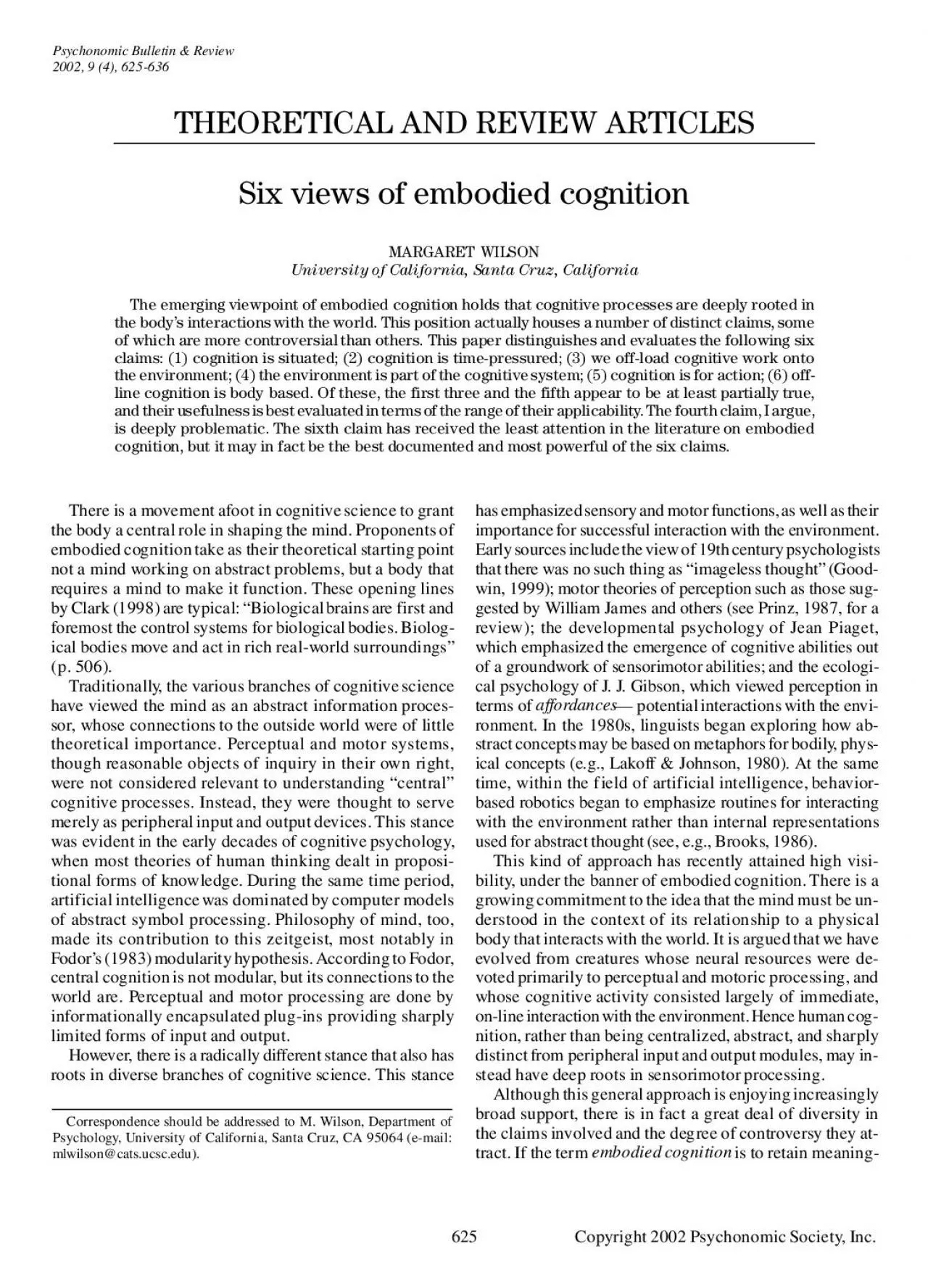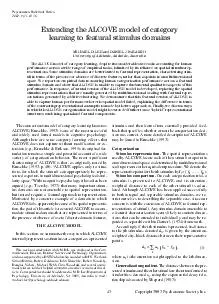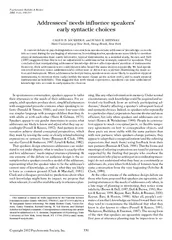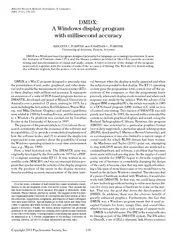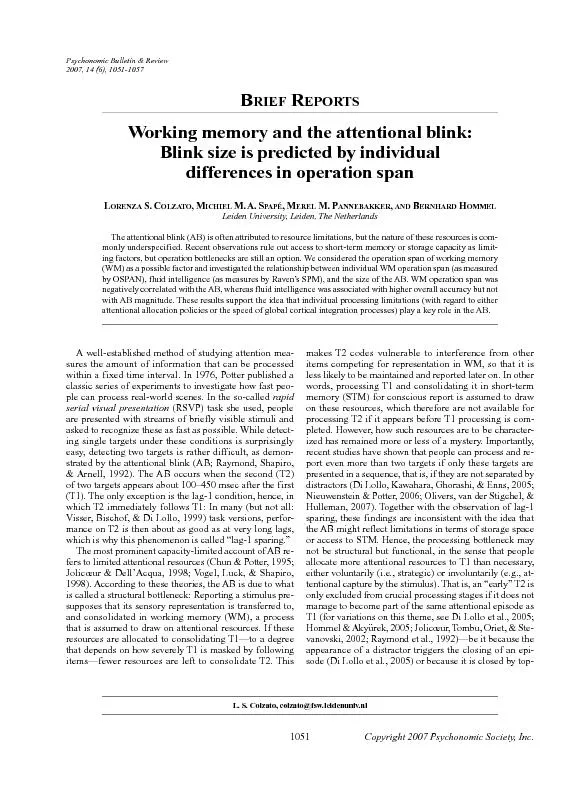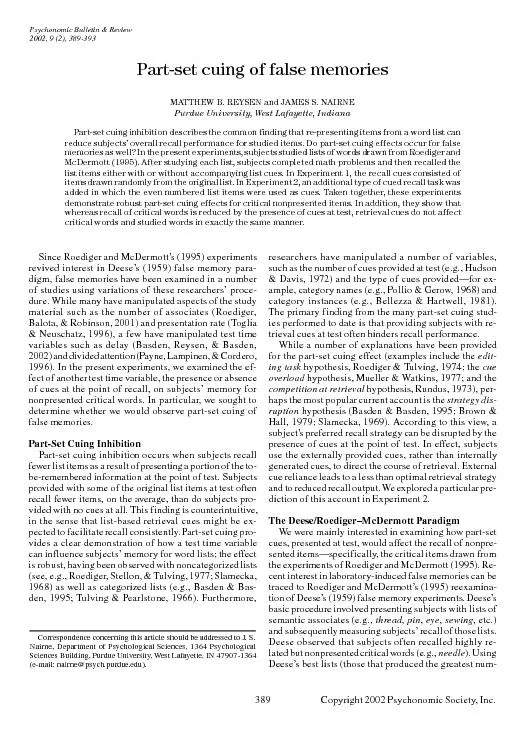PDF-Psychonomic Bulletin Review2002 9 4 625636
Author : desha | Published Date : 2022-08-24
There is a movement afoot in cognitive science to grantthe body a central role in shaping the mind Proponents ofembodied cognition take as their theoretical starting
Presentation Embed Code
Download Presentation
Download Presentation The PPT/PDF document "Psychonomic Bulletin Review2002 9 4 625..." is the property of its rightful owner. Permission is granted to download and print the materials on this website for personal, non-commercial use only, and to display it on your personal computer provided you do not modify the materials and that you retain all copyright notices contained in the materials. By downloading content from our website, you accept the terms of this agreement.
Psychonomic Bulletin Review2002 9 4 625636: Transcript
Download Rules Of Document
"Psychonomic Bulletin Review2002 9 4 625636"The content belongs to its owner. You may download and print it for personal use, without modification, and keep all copyright notices. By downloading, you agree to these terms.
Related Documents

